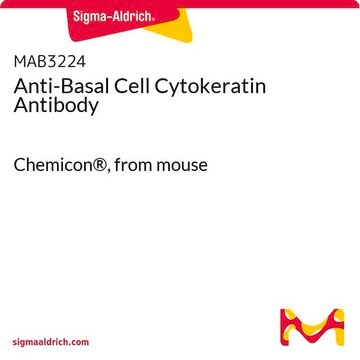MAB4140
Anti-MDR3 Antibody, clone P3 II-26
culture supernatant, clone P3 II-26, Chemicon®
About This Item
Polecane produkty
pochodzenie biologiczne
mouse
Poziom jakości
forma przeciwciała
culture supernatant
rodzaj przeciwciała
primary antibodies
klon
P3 II-26, monoclonal
reaktywność gatunkowa
human
producent / nazwa handlowa
Chemicon®
metody
immunocytochemistry: suitable
immunohistochemistry: suitable
western blot: suitable
izotyp
IgG2b
przydatność
not suitable for immunohistochemistry (Paraffin)
numer dostępu NCBI
numer dostępu UniProt
Warunki transportu
wet ice
informacje o genach
human ... ABCB4(5244)
Specyficzność
Immunogen
Zastosowanie
Immunocytochemistry: 1:20 - 1:50 on acetone-fixed cytospin preparations
Immunohistochemistry: 1:20 on acetone-fixed frozen sections
Not suitable for paraffin-embedded tissues
Optimal working dilutions must be determined by end user.
Przechowywanie i stabilność
Inne uwagi
Informacje prawne
Not finding the right product?
Try our Narzędzie selektora produktów.
Kod klasy składowania
10 - Combustible liquids
Klasa zagrożenia wodnego (WGK)
WGK 2
Certyfikaty analizy (CoA)
Poszukaj Certyfikaty analizy (CoA), wpisując numer partii/serii produktów. Numery serii i partii można znaleźć na etykiecie produktu po słowach „seria” lub „partia”.
Masz już ten produkt?
Dokumenty związane z niedawno zakupionymi produktami zostały zamieszczone w Bibliotece dokumentów.
Nasz zespół naukowców ma doświadczenie we wszystkich obszarach badań, w tym w naukach przyrodniczych, materiałoznawstwie, syntezie chemicznej, chromatografii, analityce i wielu innych dziedzinach.
Skontaktuj się z zespołem ds. pomocy technicznej







